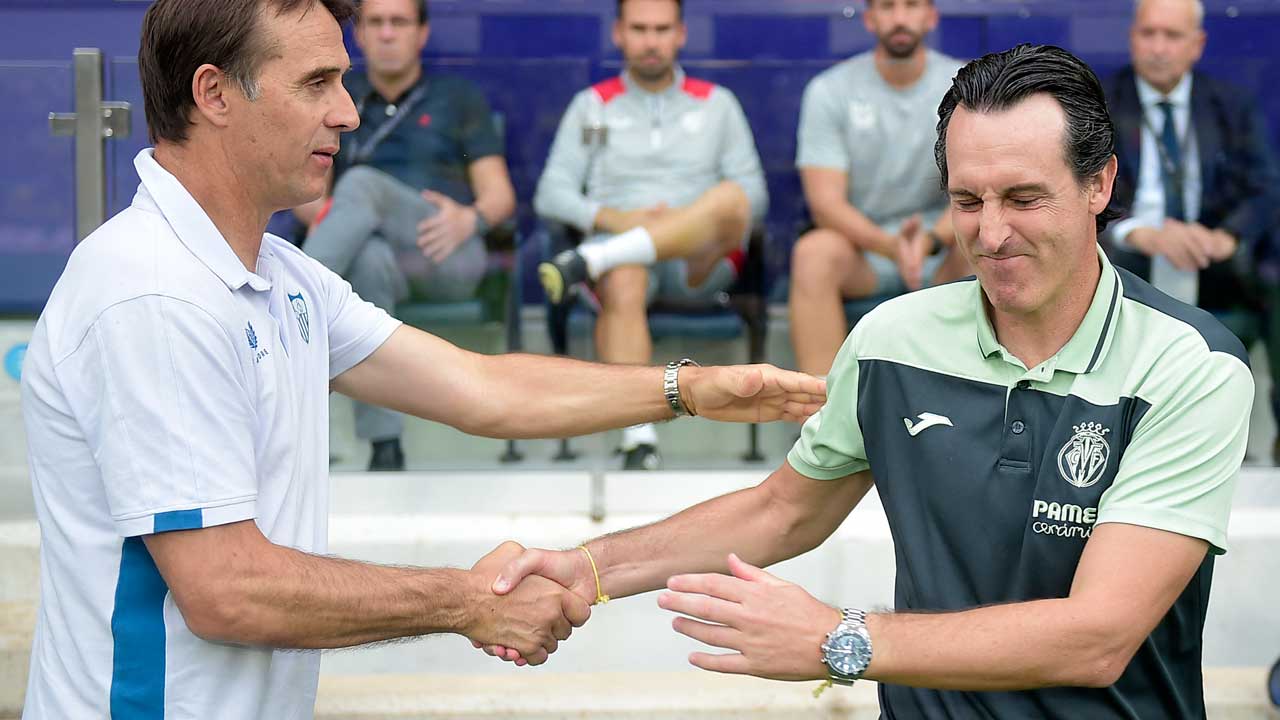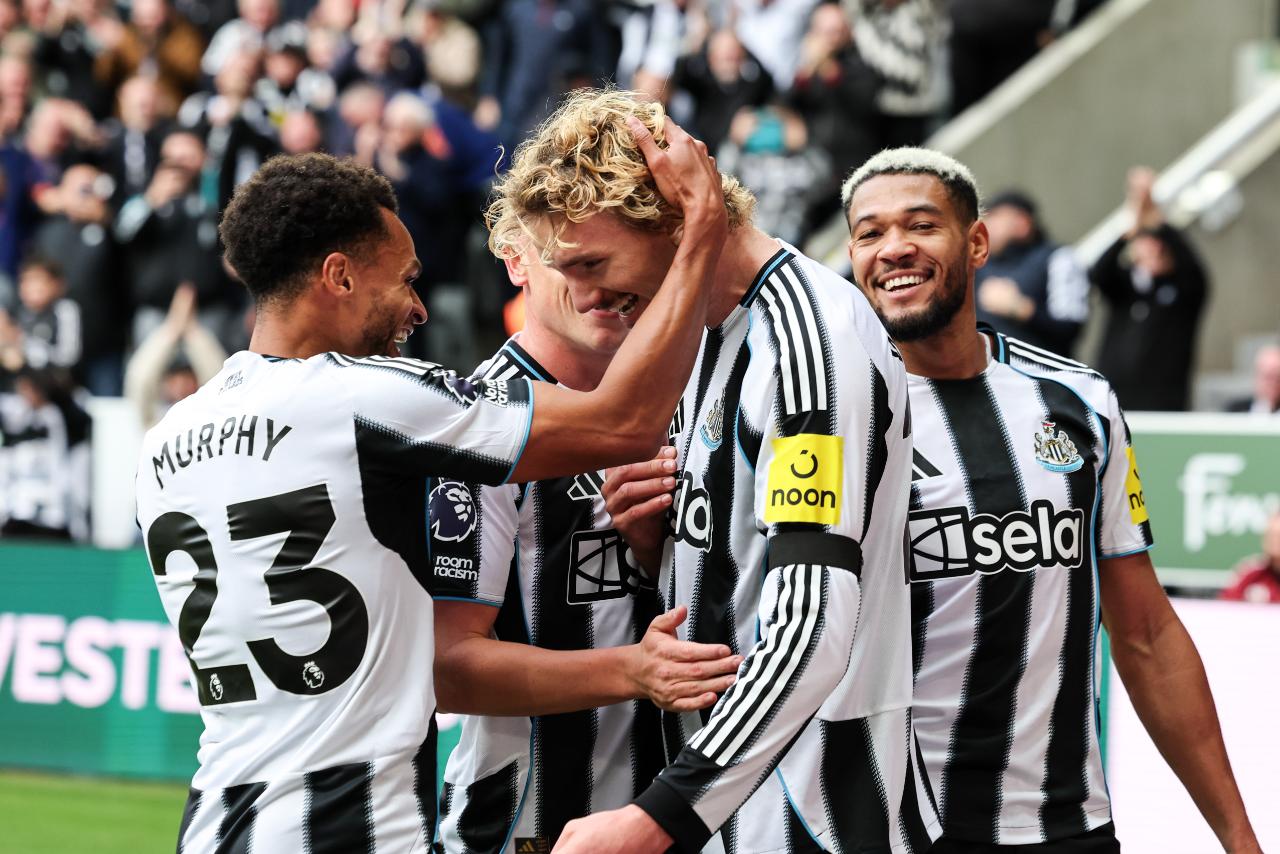Formed by Hammers supporters Jack Elderton and Callum Goodall to offer their fellow fans in-depth but accessible analysis of their team and its players, Analytics United use performance analysis and data to examine how West Ham United could shape up under new Head Coach Julen Lopetegui...
West Ham United have confirmed the appointment of Julen Lopetegui as their new Head Coach ahead of the 2024/25 Premier League season.
The 57-year-old arrives with an impressive CV, having taken on some of the biggest jobs in European football since beginning his career in the dugout at Rayo Vallecano back in 2003.
Chief among his successes are three consecutive third-place finishes in La Liga and a UEFA Europa League trophy at Sevilla in 2020, back-to-back European Championship titles with Spain’s Under-19s and Under-21s, a 20-game unbeaten tenure in charge of the Spanish national team that led to a stint with European giants Real Madrid, and most recently, successfully avoiding relegation with a Wolverhampton Wanderers side that were five points from safety when he took charge.
His return to England’s top-flight means that he will be one of four managers in the Premier League hailing from Gipuzkoa, a tiny Basque province sandwiched between the Pyrenees and the Atlantic Ocean that Unai Emery, Mikel Arteta, Andoni Iraola, Xabi Alonso, and Real Sociedad’s Imanol Alguacil also call home. Despite their shared cultural identity, each of these Basque-born managers have their own distinct tactical approaches and this article will dissect Lopetegui’s footballing identity to give West Ham fans a taste of what they might expect in this exciting new era.

In Possession
Julen Lopetegui is perhaps best described as a possession-first tactician who believes “it is easier to control and win games by having possession of the ball”. This tends to play out in his preferred 4-3-3 formation – a balanced yet flexible structure that allows his teams to control possession, dictate the tempo of the game, and create numerical advantages in key areas of the pitch.
Central to this system is the three-man midfield, the heartbeat of any Lopetegui side. Typically, this trio consists of a defensive midfielder, a playmaker, and a shuttler, each with their own roles within the system. The latter is tasked with bombing between both boxes, making themselves available as a receiver of one-twos in order to play through pressure and get the ball out wide whilst the playmaker, who is similarly important in second-phase build-up, keeps things ticking over and looks to help the team transition from defence to attack by playing line-breaking passes.
The defensive midfielder is vital, as their function facilitates two hallmarks of Lopetegui’s style of play: building out from the back whilst using full-backs to hold the width. By dropping in and splitting the centre-backs, the defensive midfielder provides goalkeepers and defenders with an additional passing option in the first phase of possession, enabling the team to build up more comfortably, passing it around the back until passing lanes open up ahead. This also allows the full-backs to get forward with ample defensive cover should the team lose possession.
The vision from our new Head Coach 👀 pic.twitter.com/VDSAfvKBYJ
— West Ham United (@WestHam) May 25, 2024
While building up, the aim is often to drag the opposition to one side of the pitch to isolate players on the opposite flank, where they can then receive a long switch in space – a strategy reminiscent of Declan Rice’s switches to Jarrod Bowen during his time at the Club. When the switch isn’t on, the team is asked to play through the thirds, manipulating the opposition’s structure until spaces open up on the flanks, in the channels, or in behind.
Once in the final third, fluidity, interchanges, and overloads are central to chance creation. Here, the wingers will often tuck into the half-spaces as the striker floats around facilitating play, hoping to drag defenders out of position and create gaps for teammates to exploit. Simultaneously, the full-backs will bomb on into the advanced wide spaces to whip crosses into the box for the striker and a late-arriving midfielder to attack. In 2019/20, Lopetegui’s first season with Sevilla, his side played the most crosses in La Liga with 23.2 attempts per 90.
Considering all of this in the context of a West Ham side that is blessed with elite half-space threats in Jarrod Bowen and Mohammed Kudus, overlapping fullbacks in Vladimír Coufal and Emerson, and Edson Álvarez, a defensive midfielder who is comfortable in possession and great at breaking up opposition attacks, you can start to see how West Ham might shape up under the new head coach.

Out of Possession
Perhaps above all else, Lopetegui has earned himself a reputation for being able to coach a watertight defence. His out-of-possession tactics are as meticulously planned as his in-possession ones, with an approach built on the foundations of strong organisation, high intensity, and structured pressing, making his teams difficult to break down. There’s no better example of this than his Sevilla side who boasted the third-best defence in La Liga in both the 2019/20 and 2021/22 seasons either side of the 2020/21 season when they were the best defensive team in the division with just 34.8 xGA conceded (0.92 per 90).
This solid defensive approach tends to stem from a 4-3-3 or 4-2-3-1 shape, effectively covering the pitch but providing enough flexibility to adapt to different phases of play and opposition set-ups. When pressing, his teams often transition into a 4-4-2 formation, not structurally dissimilar to the approach that West Ham fans have grown accustomed to under David Moyes. In this setup, an advanced central midfielder pushes up to join the striker in the first line of pressure. This pressing shape is a relatively consistent feature of Lopetegui’s defensive strategy, designed to disrupt build-up play and force errors.
Despite it being his preference, it is worth noting that Lopetegui isn’t wedded to this shape, acknowledging that “formations are no longer so important in football”, and that “styles and decision-making” often determine results. This marriage between idealism and pragmatism is exemplified by Wolves’ 3-0 home win against Liverpool last season. Recognising the Reds’ threat in transition, Lopetegui adopted a more pragmatic iteration of the 4-4-2 with a deeper defensive line, reducing the spaces in behind the defence and limiting Liverpool to just two shots on target from 22 shots.
As you would expect of a defence that conceded just 33 goals in 38 league games at Sevilla, disciplined centre-backs are essential. These players are expected to lead from the back, maintaining the team’s shape and defensive line height which is adjusted in accordance to the specific threats presented by the opposition. Their positioning is also crucial to defending against threats in behind and direct play, both of which can be the undoing of high defensive lines. This risk is mitigated well by the presence of the defensive midfielder though, who can step up and close down approaching attackers, or drop in alongside the centre-backs to guard against aerial bombardment. With risk comes reward, and one of the main benefits of this high line is that his sides are able to reduce the size of the area in which the opposition can play, suffocating their build-up and forcing opponents into making mistakes in dangerous areas.
This reduced space for the opposition to play in makes it easier to congest the central zones and force the opposition wide and into less promising spaces for chance creation. And the increased congestion in the middle of the park, with the support of the higher defensive line, also makes it more possible to counterpress effectively – an area of the game where James Ward-Prowse excels. Whilst at Southampton under Ralph Hasenhüttl,, Ward-Prowse was at home featuring in a hugely intense defensive system and racked up some of the most positive numbers in the division for pressing and recovering possession – his 7.58 recoveries per 90 in the 2020/21 season placed him in the top 13% of Premier League midfielders in this respect.
As always, the pressure starts from the front with the striker who will force the ball to one side with the wide players on the ball-side jumping to support. The midfield trio can then look to block passes back inside and create opportunities for turnovers early in the opposition’s build-up phase. This is an approach that could work brilliantly for Mohammed Kudus who recorded an outstanding 7.68 recoveries per 90 in the Premier League this season, the most of any forward and the fourth-most overall.

Conclusion
West Ham fans can look forward to increased intensity in the press with a well-drilled defensive unit supporting a more engaged out of possession style before instigating a more considered and intricate in possession approach focused on controlling games with the ball rather than without it.
With an excellent platform to build from, and key players that match well with the proposed stylistic direction, Lopetegui has the tools to succeed and entertain whilst doing so over the coming years in East London.
*The views and opinions expressed in this article are those of Analytics United and do not necessarily reflect the views and opinions of West Ham United.




